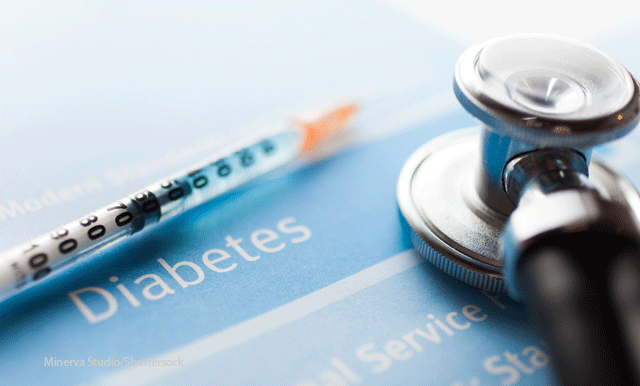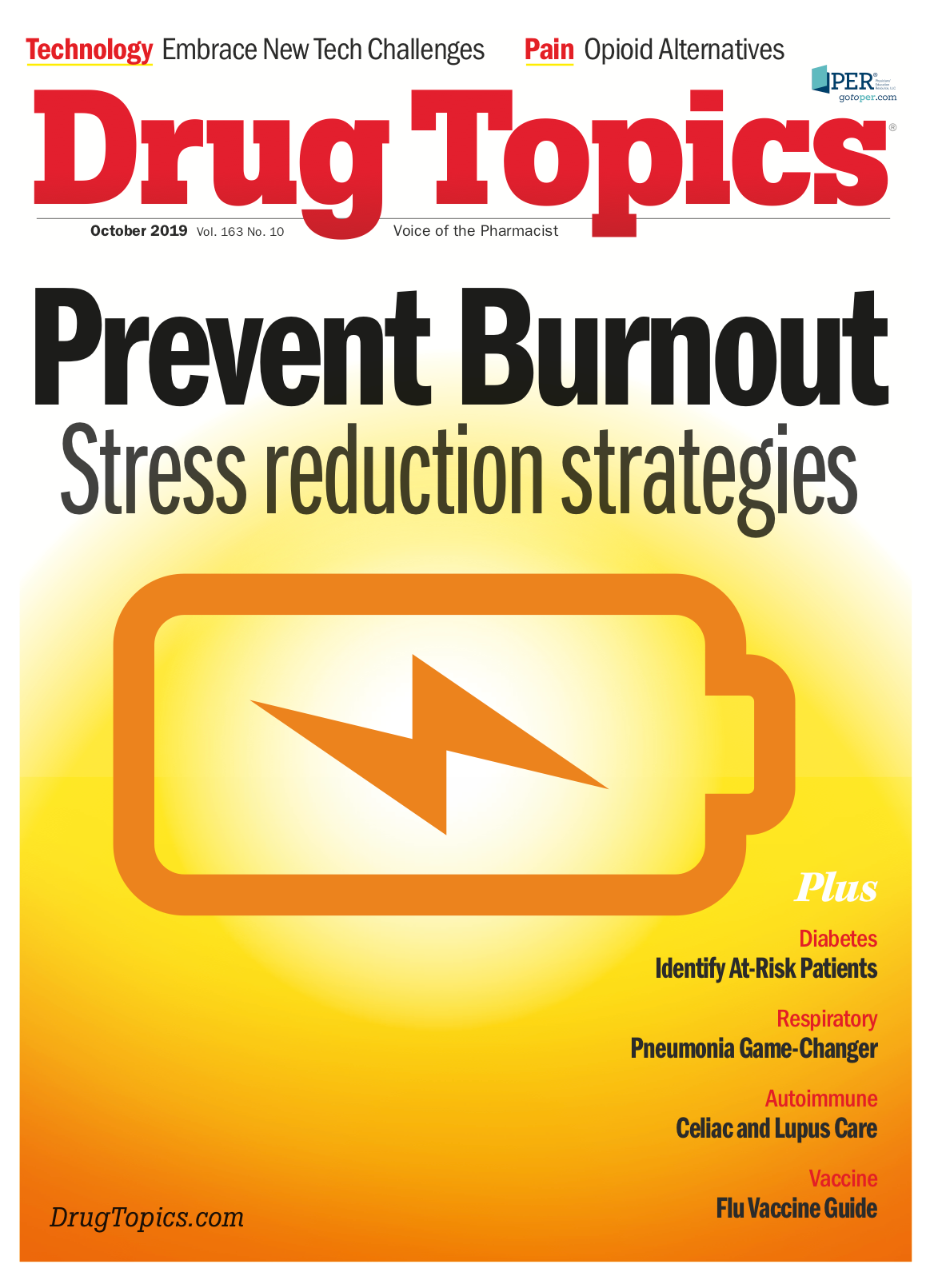5 Types of Diabetes Patients Who Need More Management
Tips for identifying patients with diabetes who need more direction and help.

With over 23 million Americans diagnosed with diabetes, chances are some of them step through the door of your pharmacy every day.
“Every patient who has diabetes needs counseling, whether they’re picking up a brand-new prescription or getting a refill on an existing prescription,” stresses Susan Cornell, PharmD, CDE, associate director of experiential education and associate professor of pharmacy practice at Midwestern University Chicago College of Pharmacy in Downers Grove, IL. For every prescription they dispense, Cornell says, pharmacists should ensure the patient understands what it’s for, how to take it, and how to minimize side effects.
Trending: The 10 Best-and Worst-States for Vaccinations
But some patients with diabetes need more in-depth education about their disease and its treatment. In the busy retail environment, how can pharmacists determine who these patients are?
Continue reading on page 2...1. Self-Reporting Numbers Out of Range (Or Failing to Test)
Whenever a patient picks up a diabetes prescription, Cornell says, the important question to ask is “So what was your blood sugar this morning?” This simple question, she says, helps gauge the patient’s understanding of his condition and whether more education is needed.
If the patient’s answer indicates that her blood glucose is elevated, Cornell recommends following up with “What does that mean to you? What is your goal? How often are you getting numbers that are above your goal?” These questions can springboard a discussion about how the patient can better reach her goals.
Read More: Enteric Zoster: Hidden Shingles Threat
On the other hand, if the patient responds, “I didn’t check my blood sugar,” the pharmacist should ask why not and then discuss the crucial role of testing to gain information about how well the patient’s drugs, diet, and exercise are working.
For patients who mention frequent hypoglycemic episodes, the pharmacist can help investigate the cause, Cornell says. What time of day does hypoglycemia typically occur? Is the patient skipping meals or exercising without replenishing nutrients?
Continue reading on page 3...2. Newly Diagnosed or Starting Insulin Therapy
Travis Wolff, PharmD, BCACP, co-owner of Med-World Pharmacy in Sapulpa, OK bases his recommendations for pharmacist diabetes education on the critical times for diabetes self-management education and support (DSMES) identified by the American Diabetes Association (ADA; see Table 1).
Patients coming in for the first time with a prescription for an antidiabetic drug (typically metformin for type 2 diabetes) are overwhelmed, says Wolff. He adds that he doesn’t want to overload them with information, so he advises giving them a “survival level education.” These patients are often confused by all the different blood glucose numbers they’ve heard mentioned, Wolff notes, so they need clear information about fasting and 2-hour postprandial blood glucose goals.
Trending: Lefamulin Could Be Vital in the Pneumonia Fight
Patients must be prepared to handle episodes of hypoglycemia, he says, particularly if they are being treated with insulin. “Make sure they know to drink non-diet soda or have non-sugar free candy!” Wolff notes. For patients beginning to use a glucometer, he recommends a 15-minute training session to teach them how to use it properly so they can be comfortable and independent with the meter.
Continue reading on page 4...
3. New Non-Diabetes Prescriptions
While new prescriptions may seem to be unrelated to diabetes, vigilant pharmacists may realize that patients’ new conditions may be associated with microvascular or macrovascular complications of diabetes, Wolff says. Examples include prescriptions for nerve pain, ophthalmic issues, gastrointestinal issues, anticholesterol drugs, and even levothyroxine. “It’s a great opportunity to get involved and help them,” Wolff says, “because if they are getting more complications then their diabetes is probably not as well controlled as it could be.” The way to open this conversation is to go back to square one, says Wolff, with a question like, “What are your blood sugars running?”
Continue reading on page 5...4. Type 1 Diabetes Transitioning to Adulthood
While we typically think of transitions as those involving health care institutions, such as assisted living to nursing home, hospital to rehab center, or the like, Wolff points out that there are many significant transitions occurring outside the institutional environment that provide key opportunities for education. Chief among them is the transition to adulthood for an individual who was diagnosed with type 1 diabetes during childhood. Eighteen-year-olds with diabetes going off to college or work need education about how to manage their diabetes, Wolff says. “They are no longer under the supervision of Mom and Dad where they had their diet controlled, constant reminders to take their medication, and constant reminders to keep them healthy in every way,” he explains. Education can empower these young adults to take charge of their own diabetes.
Continue reading on page 6...
5. Switching to Medicare
The transition to Medicare at age 65 can be very significant transition for patients with diabetes, Wolff says. “They might have to go somewhere else to get their test strips,” he says, “or they may have to change diabetes drugs due to formularies, which is a really big deal.” He sees many patients who need to switch between insulin products for this reason and require education about the new product.
Read More: How to Prevent Pharmacist Burnout
Wolff says that even switching to a new Medicare plan each January comes with many questions. “It’s important that they come to the community pharmacist to help them understand whether the medications that are currently on will be covered under new plan for next year,” Wolff notes. “They have to see if they’re willing to switch to the new formulary agents or switch plans to one where it is covered.”
Continue reading on page 7...
Have the Discussion
Educational conversations with diabetes patients are often patient-led, Wolff says, but questions are an important part of eliciting the patient’s involvement. Wolff recommends basing questions on the American Association of Diabetes Educators (AADE)’s seven self-care behaviors of diabetes (sidebar), such as “How has your diet been lately? How has your physical activity been? Have you been taking your medicine regularly?” To help with workflow in busy pharmacies, Wolff recommends training pharmacy technicians and clerks to ask these sorts of questions to patients with diabetes so they can identify those that need a more in-depth conversation with the pharmacist. While pharmacy technicians are not permitted to counsel in most states, they may ask questions, Wolff explains. “The minute the patient has a question back or the patient doesn’t answer the question in the appropriate way, it’s time to get a pharmacist involved.”
Trending: The 25 Cities with the Highest Pharmacist Salaries: 2018
Wolff stresses teaching patients how to incorporate diabetes management into regular life. Remind patients that exercise doesn’t only mean walking on a treadmill; physical activity can be incorporated into routines by parking further from the store or carrying shopping bags to the car. Broaching these topics is valuable, he says. “Just the fact that you’re asking the questions makes them subconsciously eat better and take care of themselves.”
When More Education is Needed
It’s important for pharmacists to know their limitations, Cornell says, and to refer patients to other resources when necessary. Just as primary care physicians have referral lists, Cornell believes that every pharmacist should have a referral list. “We should have a diabetes education program we can refer a patient to, a dietitian who specializes in diabetes, an endocrinologist, a podiatrist, a dentist where we know our patient is going to get the proper care,” she says.
